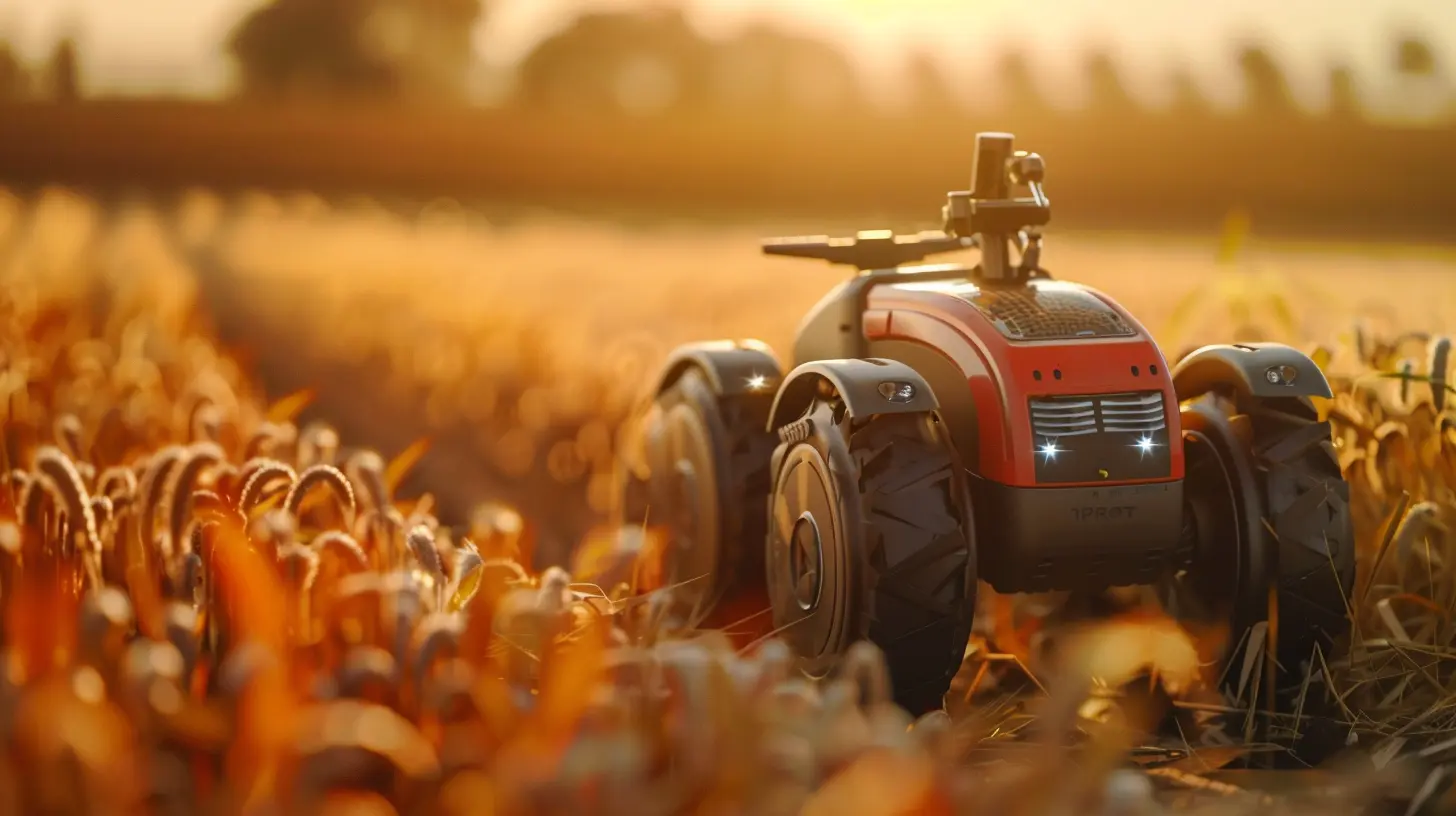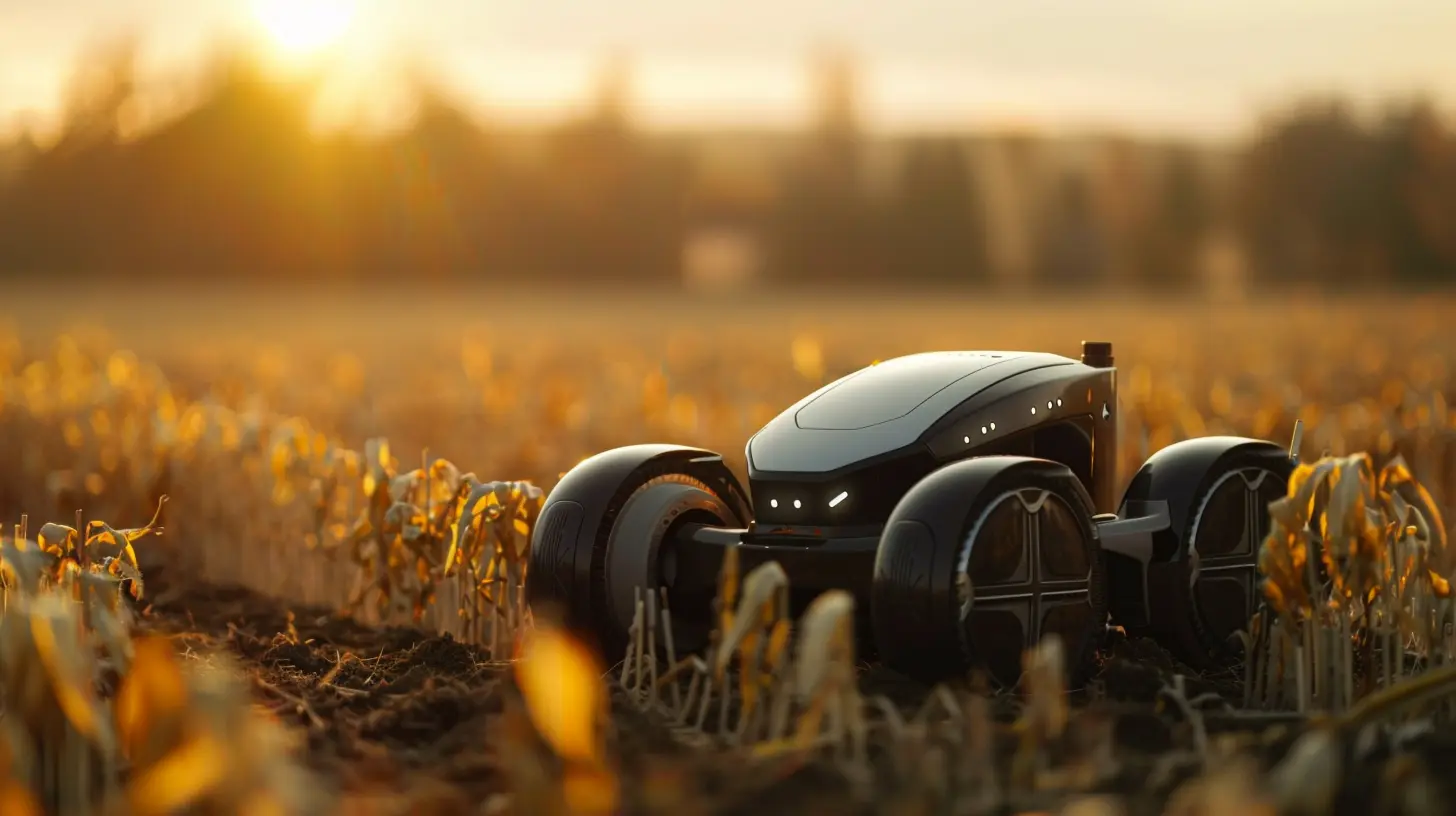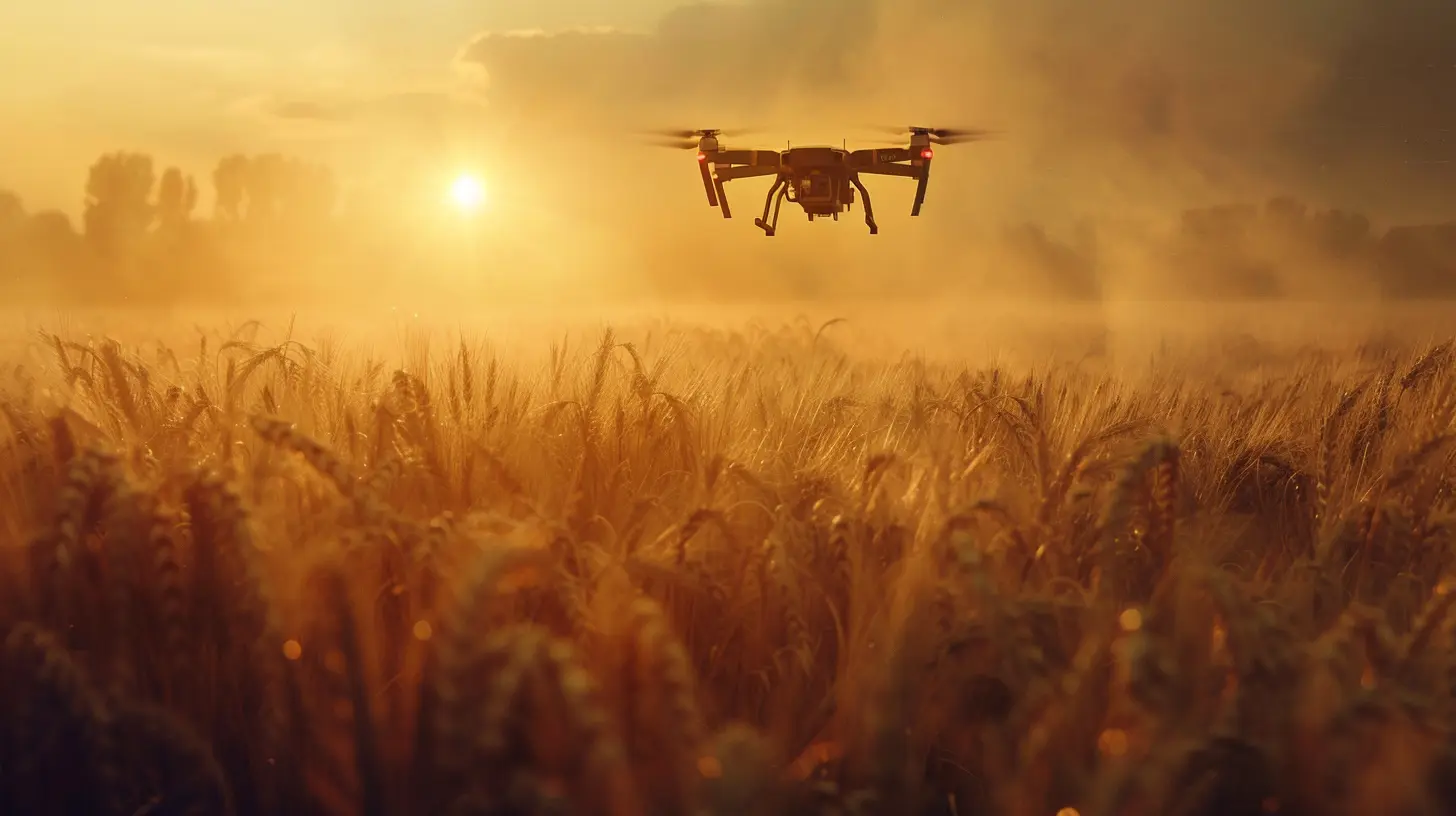Robots in Agriculture: Changing the Future of Farming
23 May 2025
Agriculture has always been the backbone of human civilization. From the earliest days of planting seeds by hand to the more recent use of tractors and mechanical tools, farming has continuously evolved to meet the demands of growing populations. But now, agriculture is on the cusp of a revolution. A technological revolution. And the stars of this new era? Robots. Yep, robots aren’t just for factories or sci-fi movies anymore—they’re coming to a farm near you. So, how exactly are robots changing the future of farming? Let’s dive in.

The Rise of Robotics in Agriculture
First off, let’s get one thing straight. We’re not talking about robot cowboys herding cattle (though that would be cool). We’re talking about highly specialized machines designed to tackle specific agricultural tasks. Think of them as your farm’s new helpers—but ones that don’t need coffee breaks or sleep.The global agricultural robotics market has been growing steadily over the past few years. According to market reports, the sector is expected to reach billions in value over the next decade. Why the sudden boom? Well, there are a few key reasons:
1. Labor Shortages: Farms around the world are facing labor shortages. Fewer people are willing to take on the physically demanding work of farming, especially in developed countries. Robots can step in where human labor is lacking.
2. Efficiency: Robots don’t tire. They can work 24/7, rain or shine, allowing farmers to produce more crops at a faster rate.
3. Precision: With the help of AI and machine learning, today’s agricultural robots can perform tasks with incredible accuracy. This means less waste and higher yields.

What Tasks Are Robots Performing on Farms?
Now, you might be wondering, “What exactly are these robots doing on farms?” Well, the answer is, quite a lot! From planting to harvesting, robots are rolling up their sleeves and getting their hands dirty—metaphorically speaking, of course. Here’s a breakdown of some tasks these bots are handling:1. Planting Seeds
Gone are the days of scattering seeds by hand. Robots can now plant seeds with pinpoint accuracy. Autonomous tractors equipped with GPS and AI technology can plow fields, plant seeds in perfect rows, and even adjust planting depth based on soil conditions. This precision ensures that crops have the best possible start, reducing waste and improving overall yields.2. Weeding and Pest Control
One of the most time-consuming tasks for farmers is managing weeds and pests. But guess what? Robots are taking over this tedious task too. Some robots use advanced sensors and computer vision to identify and remove weeds without harming the crops. Others can spot pests and apply pesticides in a highly targeted manner, reducing the amount of chemicals used. Imagine a robot gardener that never misses a weed—sounds like a dream, right?3. Harvesting Crops
Harvesting is perhaps one of the most labor-intensive parts of farming. However, robots are making it easier. For example, strawberry-picking robots use AI to identify ripe berries and pluck them without bruising. Same goes for robots designed to harvest crops like lettuce, tomatoes, and even apples. These machines can work faster than humans and don’t take breaks, meaning more crops can be harvested in less time.4. Monitoring and Data Collection
In today’s world, data is king. Farmers need to know how their crops are doing at every stage of the growing process. Enter drones and ground-based robots equipped with sensors. These machines can fly over fields or roll through them, collecting data on plant health, soil conditions, and even moisture levels. This data helps farmers make informed decisions, improving crop yields and reducing waste.5. Livestock Management
It's not just crops that are benefiting from robotics—livestock is getting in on the action too. Robots can now feed animals, clean barns, and even monitor the health of livestock. Some robots use AI to detect signs of illness in animals, allowing farmers to intervene early and prevent the spread of disease. It's like having a vet on call 24/7.
The Role of AI and Machine Learning
Robots alone are impressive, but when you add artificial intelligence (AI) and machine learning into the mix, things get next-level. AI allows robots to learn and adapt to their environment. For example, a harvesting robot can learn which fruits are ripe and which are not, improving its accuracy over time. Machine learning algorithms can analyze data from sensors and drones, giving farmers insights they wouldn’t have otherwise noticed.Imagine this: a robot that not only helps you harvest your crops but also tells you how to improve your soil for next season. That’s the power of AI in agriculture, and it’s a game-changer.

Benefits of Robots in Agriculture
So, why should farmers invest in robots? What’s in it for them? Well, a lot. Here are some of the key benefits robots bring to the table:1. Increased Efficiency
Perhaps the most obvious benefit is that robots can work faster and more efficiently than humans. They don’t need to rest, they don’t get tired, and they don’t make mistakes due to fatigue. This means tasks like planting, weeding, and harvesting can be completed in a fraction of the time it would take a human team.2. Cost Savings
While the initial investment in robotics technology can be high, the long-term savings are significant. Robots reduce the need for human labor, which is one of the biggest expenses for any farm. Additionally, because robots are so precise, they reduce waste, meaning farmers spend less on seeds, pesticides, and other resources.3. Sustainability
Robots can help farms become more sustainable by reducing the use of chemicals and water. For example, some robots can apply pesticides only to the plants that need them, rather than spraying an entire field. This reduces the environmental impact of farming and helps conserve resources.4. Better Data Collection
As we mentioned earlier, robots equipped with sensors can collect a wealth of data on crops and soil. This data is invaluable for making better farming decisions. For instance, farmers can use data to determine the best time to plant or harvest, or to identify areas of the farm that need more attention.5. Improved Crop Yields
With robots handling tasks more efficiently and accurately, farmers can expect to see improved crop yields. Whether it’s planting seeds at the perfect depth or harvesting fruit at just the right time, robots take the guesswork out of farming, leading to better results.Challenges and the Road Ahead
Of course, no technology is without its challenges, and agricultural robots are no exception. One of the biggest hurdles is cost. While larger, industrial farms can afford to invest in robotics technology, smaller farms may struggle to justify the expense. However, as the technology becomes more widespread, prices are expected to drop, making it more accessible to farms of all sizes.Another challenge is the need for skilled operators. While robots can perform many tasks autonomously, they still need to be programmed, maintained, and monitored. This means farms will need workers who are trained in both agriculture and robotics—a combination that’s not always easy to find.
Lastly, there’s the issue of adaptability. While robots are great at performing specific tasks, they can struggle to handle the unpredictable nature of farming. Weather changes, uneven terrain, and unexpected challenges can all throw a wrench in the works. However, as AI and machine learning continue to improve, robots are becoming better at adapting to these challenges.
The Future of Farming
So, where is all of this headed? Are we looking at a future where farms are entirely run by robots, with humans sitting back and sipping lemonade? Well, not quite. While robots will undoubtedly play a larger role in agriculture, humans will still be needed to oversee operations, make decisions, and handle tasks that require a personal touch.That said, the future of farming is looking increasingly automated. As robots become more advanced and affordable, we can expect to see them handling more and more of the tasks that once required human labor. The result? More efficient farms, higher crop yields, and a more sustainable agricultural industry.
In short, robots are changing the future of farming—and they’re doing it faster than you might think.
all images in this post were generated using AI tools
Category:
RoboticsAuthor:

Michael Robinson
Discussion
rate this article
4 comments
Meagan McGinn
Great insights on how robotics are revolutionizing agriculture! Excited to see future advancements in this field.
May 31, 2025 at 3:03 AM

Michael Robinson
Thank you! I'm glad you found the insights valuable. Exciting times ahead for agriculture with robotics!
Rex Weber
The integration of robots in agriculture is revolutionizing farming practices by enhancing efficiency, reducing labor costs, and improving crop management. As technology advances, these innovations will play a crucial role in addressing global food production challenges.
May 26, 2025 at 10:31 AM

Michael Robinson
Thank you for your insightful comment! Indeed, the integration of robots in agriculture is transforming the industry and is essential for future food security.
Blake Acevedo
Exciting insights on how robots are revolutionizing agriculture! Their potential to enhance efficiency and sustainability could reshape farming practices for a more productive future.
May 25, 2025 at 10:47 AM

Michael Robinson
Thank you! I'm glad you found the insights valuable. Robots indeed hold great promise for transforming agriculture towards a more efficient and sustainable future.
Nora Roberson
Who knew farming could get a tech upgrade? With robots in the field, it’s like ‘Transformers’ meets ‘Green Acres!’ Let's hope these hardworking bots don’t start a rebellion. Imagine them demanding Wi-Fi and snack breaks while harvesting our crops! 🤖🌾
May 24, 2025 at 4:19 AM

Michael Robinson
Absolutely! The fusion of technology and farming is transforming agriculture, making it more efficient and innovative. Let's hope our robotic helpers stick to their tasks and leave the snacking to us! 🍏🤖



